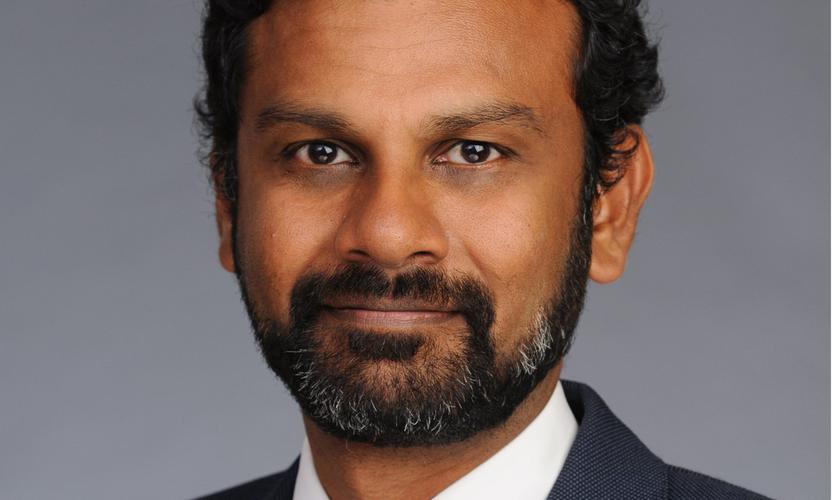What risks are playing on investors’ minds?
A ship is safe in the harbour, but that's not what ships are for. John A. Shedd
There are a number of surveys collating investor outlooks and fears. Natixis’ Institutional Investor Outlook gives a good overview of investor concerns for the year ahead, BofA Merrill Lynch’s monthly fund manager survey is a regular update of what the smart money is thinking about, but perhaps the World Economic Forum’s Global Risks Report* has the highest profile as it helps set the agenda at the Forum’s Davos meeting. The environment and cybersecurity feature as two of the fastest growing risks in the WEF report, but ‘Smart Globalisation’, where markets are open and governments strive for social cohesion, is emerging as the key buzzword at this year’s event.
European investors may empathise with John Kay, who, writing in the Financial Times, finds the new Mifid II regulations “bewildering” in “Risk, the retail investor and disastrous new rules”.
How should you define and measure risk?
Risk comes from not knowing what you're doing. Warren Buffett
The CFA Institute offers a practical guide to evaluating client risk tolerance, urging that risk measurement tools should gauge actual risk appetite, be reliable, and act as only the starting point for the investment planning process.
JP Morgan offers a basic (but helpful) introduction to risk in Derivatives and Risk Management Made Simple, targeted at pension funds. Swan Global Investments suggests a sophisticated set of new metrics to monitor risk in alternative investments. These calculations are intended to minimise losses, avoid tail risks and provide consistent returns. We think the Swan Global team introduces some useful new tools to a wider audience, but investors still need to judge how to appropriately weight those measures.
What are some of the less well known risks?
We go out, we explore, we take risk. And our successes have to pay for all that. Rex Tillerson
European Financial Review interviews three experts on How Behavioural Biases Affect Finance Professionals and happily concludes that as financial sophistication increases, behavioural biases fall.
The UNPRI has launched a guide to address ESG risks in supply chains in the private equity, infrastructure and real estate sectors*, as part of its mission to encourage the incorporation of ESG considerations into the investment appraisal and decision making process.
How do you protect yourself against risks?
More money has been lost trying to anticipate and protect from corrections than actually in them. Peter Lynch
When investors use index-based credit default swaps to hedge credit exposures they often face widening basis risk in stress situations. Standard & Poor’s shows how VIX futures can at least hedge high yield and emerging market bond tail risks.
Axioma, risk specialist in the multi-asset space, has designed a framework for generating custom risk models, aimed at risk management professionals. Axioma also presents a video on how investors can use factor models and optimisers to avoid unintended risks.
Pimco compares portfolio insurance and tail risk hedging and concludes tail risk hedging (mainly out-of-the-money options) is the way to go, but SSGA is hesitant to endorse options against tail risk hedging. Options absolutely have a place, in our view, but their usage as hedging instruments should be limited otherwise costs can undermine investment objectives.
Over the past two years or so, AQR has been arguing that hedging can actually be counterproductive for portfolio returns. This article on embracing downside risk* is a good summary of their thoughts on the subject.
Academic work on the subject
October: This is one of the peculiarly dangerous months to speculate in stocks. The others are July, January, September, April, November, May, March, June, December, August and February. Mark Twain
A Quantitative Approach to Tactical Asset Allocation advocates diversifying into global assets, using mechanical risk management tools and employing a simple market-timing solution. This very readable paper offers an easy-to-use but effective approach - no wonder it’s been downloaded over 200,000 times.
Microeconomic Origins of Macroeconomic Tail Risks finds that microeconomic shocks can translate into significant macroeconomic tail risks. The MIT study suggests that the normal distribution underestimates the frequency of tail risks - something we’ve observed across many markets.
In the functionally titled, We Don’t Quite Know What We are Talking about When We Talk About Volatility*, the authors found that only three of the 87 respondents to a survey knew the difference between mean absolute deviation and standard deviation. The respondents were highly skilled financial professionals and Ivy League graduate students preparing to work in financial engineering no less.
The Financial Psychology of Worry & Women* is a fascinating review of gender bias within financial judgement. Among other things, it reveals that women link emotion to financial decisions more than men, perhaps driving their documented more conservative approach to risk taking. Do Alpha Males Deliver Alpha finds high-testosterone hedge fund managers post substantially lower alpha returns than low-testosterone managers.
Books on the subject
Against the Gods* by Peter Bernstein is a tour-de-force history of risk, beginning with Hindu-Arab philosophers constructing the modern day number system which, for the first time, created the tools to measure probability, and ending with Proctor & Gamble’s disastrous interest rate swaps bet in 1994.
If you can bear with Nassim Taleb’s stream-of-consciousness writing style, then The Black Swan and Anti-fragile are well worth reading. The former argues that rare events are more commonplace than we think (normal distributions again) and the latter suggests that we build systems which become increasingly robust when exposed to stresses.
Something lighter - film and fiction
Shakespeare’s The Merchant of Venice* involves merchants taking risks in transporting valuable goods by sea, noblemen running up unaffordable debts and literally risking a “pound of flesh”, and young men playing games of chance to win the hand of a bride.
For readers’ children, The Tale of Squirrel Nutkin, by Beatrix Potter, recounts how a mischievous squirrel faces tail risk when he teases an owl for fun and food, and ends up losing his…tail, naturally.
The Founder charts the rise of Ray Croc, the man who brilliantly and ruthlessly took his chances to turn McDonald’s from a few hamburger stands into the biggest restaurant chain in the world.
Casino may be a violent mafia tale of greed and deception, but it also offers insights into how casinos are operated. If the calculated risk taking of poker is more your thing, then Rounders is one of the best movies on the game.
Highly recommended list
- Global Risks Report 2018 - World Economic Forum
- ESG risks in supply chains in private companies - UNPRI
- Embracing downside risk - AQR
- We Don’t Quite Know What We are Talking about When We Talk About Volatility - Daniel Goldstein, London Business School
- The Financial Psychology of Worry & Women - Victor Ricciardi
- Against the Gods - Peter Bernstein
- The Merchant of Venice - William Shakespeare






































